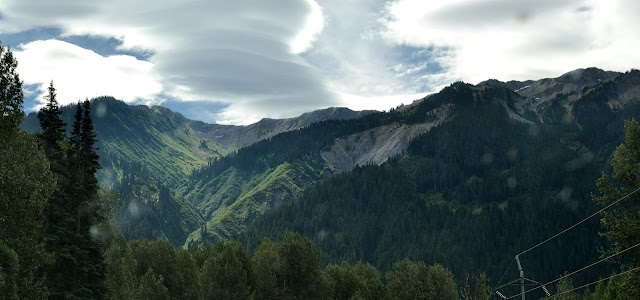The road into Stewart was absolutely breathtaking. We followed a raging river through the mountains into Stewart. The snow covered peaks were above us with numerous glaciers in the folds of the mountains beside the road.
We arrived in Stewart the same time as a whole caravan was arriving. We found our spot got backed in and set up before half of them could figure out where they were going. Forget them it's time to explore.
Stewart is located at the head of Portland Canal, a narrow 145 km/90 mile long fjord. The fjord forms a natural boundary between Canada and the United States. Stewart is Canada's most northerly ice-free port.
Gold and silver mining caused a rapid growth in the early part of the 20th century. As many as 10,000 lived in the area but wartime caused a mass exodus. The ore that made Silback Premier Gold Mine, one of British Columbia's richest gold-silver mines was discovered in 1916. This mine would support Stewart and Hyder until the 1950's
Until the 1970's the only connections to the outside world were by water and air. With the construction of Highway 37A, Stewart has become an important port for northwest British Columbia.
 |
| Portland Canal |
 |
| Ship docked in Stewart |
 |
| The pilings remain where a town once existed |
 |
| Public dock - Portland Canal |
 |
| Someone's house |
 |
| Another public dock & another house with green space |
 |
| A large piece of driftwood just sitting on the road |





No comments:
Post a Comment